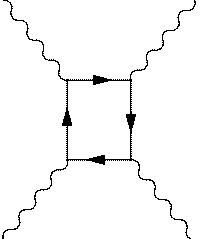I stumbled upon Wheeler's idea that there could be only one electron. If I understood correctly, basically the idea is that one electron moves forward and backward in time such that it appears as if there are many electrons and positrons. Of course there will have to be as many positrons as electrons and this cannot explain why there are many more electrons than positrons around.
Nevertheless taking inspiration from this idea I wondered whether it is possible to interpret a pair creation of electron and positron followed by pair annihilation as one electron moving in a timeloop continuously absorbing and emitting photons.


